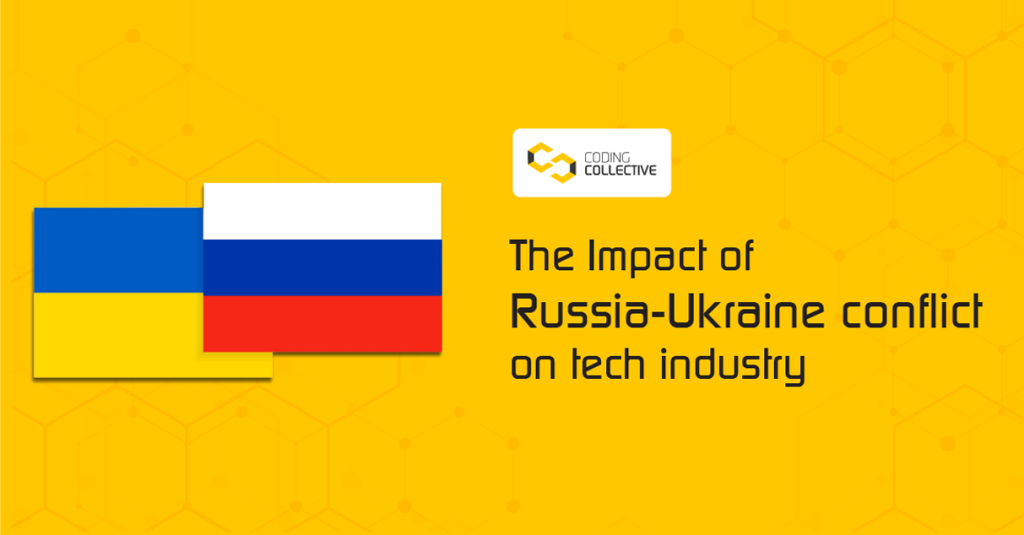
The Russia-Ukraine conflict presents a worldwide cybersecurity threat and an overall damper on the global IT industry. Countries worldwide have condemned this attack while enacting strict sanctions against Russia. Russia is a world leader in cyber warfare, sowing misinformation and weaponizing digital platforms. And semiconductor bottlenecks could get worse as the Ukraine crisis deepens, with 90% of U.S. semiconductor-grade neon supplies coming from Ukraine, and 45% of the world’s palladium coming from Russia. While the US administration threatens a chip blockade of Russia, it is adding to the uncertainties already roiling semiconductor markets.
1. Cybersecurity Is A Rising Concern
Immediately after the conflict broke out, suspected Russian-sourced cyber-attacks were observed over a 48-hour period at an increase of over 800%. Early cyber skirmishing has already begun, with Ukrainian government systems and banks attacked in the last weeks. The Cybersecurity and Infrastructure Security Agency has provided detailed recommendations for companies, especially those working with Ukrainian or Russian organizations. They advise firms to pre-analyze the company’s remote access and ensure that all the access requires multi-factor authentication. It is also imperative that IT personnel disable all the ports and protocols that are not necessary for a business to reduce exposure and risks. Additionally, a company must remain vigilant against any possible intrusions and unusual network behavior. This is also high time to invest in good antivirus software to protect your organization’s network. Also, ensure all the signatures and authentication in your existing tools are updated. As a business head, you must recognize cyber security as an aspect that goes hand in hand with overall business security and risk. In face of cyber threats, corporate leadership too often turns to IT for a solution, but IT security and geopolitical risk assessments must be monitored securely. As part of the management team, your minds must turn to critical infrastructure amid the threat of state-sponsored cyberattacks. While this is a serious threat, supply chains may be a more vulnerable target. These networks often lack the security resources and awareness of other targets, and recent attacks highlight their weakness.
If your business works with Ukrainian organizations, closely monitor the traffic and be extra vigilant. It is imperative to have a crisis-management team in place to respond to any intrusion and mitigate the damage in the case of a cyber-attack. Lastly, plan for the worst! Ensure your organization is prepared to protect critical assets and disconnect high-impact parts of the network if necessary. Since many Fortune 500 companies rely on Ukrainian IT services, attacks on Ukraine could work their way through the software supply chain to affect other nations. In such an interconnected world, cyberattacks are rarely isolated.

2. Impact On IT Personnel
The impact on the tech industry will not stop only at cyber security concerns. Pre-invasion Ukraine was also a valuable, growing hub for tech talent. Tech accounts for over 4% of Ukraine’s GDP; while this is much smaller than, say, India, where the share of tech in GDP is closer to 8%, it was growing fast. The Ukrainian IT development sector exported $6.8 billion in IT services in 2021 and increased by 36% between 2020 and 2021. One in five Fortune 500 companies use Ukrainian IT services, among them Microsoft, Google, Samsung, Oracle, Snap, and Ring, drawn in by the country’s minimal bureaucratic hurdles, favorable tax policies, and the professionalization of its tech sector. While Ukrainian IT got its start as a low-cost offshoring destination, it has moved up to higher-end value-added work such as systems architecture, business analysis, and experience design. It has English-speaking developers in time zones that are easier than Asian ones for companies in the U.S. and EU. According to one count, the country is home to over 240,000 tech specialists and more than a hundred R&D centers for international companies. The country’s small but growing blessing of unicorns includes ventures such as Gitlab and Grammarly.
Ukraine’s IT industry boasts an impressive collection of rankings on league tables that tech managers follow: first in Eastern Europe in outsourcing developers, first in all of Europe in terms of the number of graduates of technical high schools, fifth in a league table of the best software developers in the world, first globally by the number of Unity3D game developers and C++ engineers and second in JavaScript, Scala, and Magento developers. Now, the country’s dynamic tech clusters — in Kyiv, Lviv, Kharkiv, and Dnipro — are all being compromised. To limit the damage, several businesses are trying to move their employees and contractors out of Ukraine, but unfortunately, this will have a limited impact. The Israeli software company Wix has managed to evacuate employees to Poland and Turkey, but most tech workers will not have that opportunity. The ability of many to move has already been affected by the current ban on military-aged men leaving the country and the logistics of moving with family. Some are moving employees towards more remote parts of the country, away from the main thrusts of the invasion. San Francisco-based JustAnswer (with a third of its workforce in Ukraine) has moved its data out of the country and stored it in the U.S., where Grammarly (which was founded in Ukraine) has always stored its data. Many more have invested in backup power, laptops, and internet service. Western tech firms will find that without Ukraine, the worldwide tech talent shortage will get even worse. If high-end tech work needs to be moved to other locations, some alternate European cities could be Istanbul and Tallin — they are the closest to Ukrainian tech cities in terms of socio-economic characteristics. Making a switch would be costly and difficult, but it is something companies will have to consider if the crisis drags on or if Putin is successful. Many companies around the globe have their corporate offices and research centers in Russia and Ukraine or are dependent on the workforce in these countries. Post the invasion, the sanctions may lead to the loss of government support for Russian and Ukrainian organizations and R&D centers. With hundreds of millions of dollars invested by companies to create a developer and reseller channel
in Russia, this development may result in substantial losses for the industry. In addition, IT companies may have to infuse funds to mitigate the risk of a possible digital war in the case of a prolonged invasion.
3. Impact on the semiconductor industry
The semiconductor shortage, which was expected to ease by mid-2022, is likely to get worse. The Russia-Ukraine conflict has the potential to further aggravate the issue of semiconductor shortage, with a direct impact on the supply chain of raw materials for chip manufacturing and a fresh wave of panic buying. The region supplies various raw materials that are critical to chip manufacturing. Ukraine is a major source of inert gasses, such as neon required for the semiconductor lithography process, and any disruption in the supply of neon and other noble gasses from the country could trigger shortages and associated cost inflation. Russia is an important producer of metals like
aluminum, nickel, and copper. Aluminum is a conductor that is commonly used to manufacture passive components and in wire bonding. Passive components, such as resistors and capacitors, are commonly used in all types of electronic equipment. Any disruption in the supply of any of these metals could cause prices to rise and subsequently impact the prices of semiconductor devices and electronic systems.
Just like Taiwan, both Ukraine and Russia also play a pivotal role in the global semiconductor supply chains. Semiconductors, that power everything electronic on earth and also in space, have a complex
ecosystem of chip manufacturing. And chip manufacturing is a difficult and complex process. The global semiconductor industry is interdependent, and no nation in the world has managed to master
the ecosystem as yet. The Semiconductor Supply chain is a complex Eco-System involving companies from different countries and continents for raw material, equipment, wafer manufacturing, packaging, fabless companies, distributors, and finally electronics products as customers. Any small disruption in any part of this supply chain creates a bubble in this complex supply chain which affects everybody.

4. Response of social media firms to Russia Ukraine conflict
Under the threat of the ongoing conflict, Facebook and YouTube are blocking Russian state media from running ads on their platforms, while Twitter is suspending all advertising in Ukraine and Russia, as pressure mounts on tech platforms to respond to Russia’s invasion of Ukraine. Facebook and YouTube are blocking Russian state media from running ads on their platforms. Twitter, which banned advertising from state-controlled media in 2019, also took action. It is temporarily pausing all ads in Ukraine and Russia “to ensure critical public safety information is elevated and ads don’t detract from it. Youtube is pausing a number of channels’ ability to monetize on YouTube, including several Russian
channels affiliated with recent sanctions. They will also be restricted in Ukraine due to “a government request”, says Youtube. The social media channels have taken this step to prevent Russian state-owned outlets from advertising and monetizing using these platforms.
